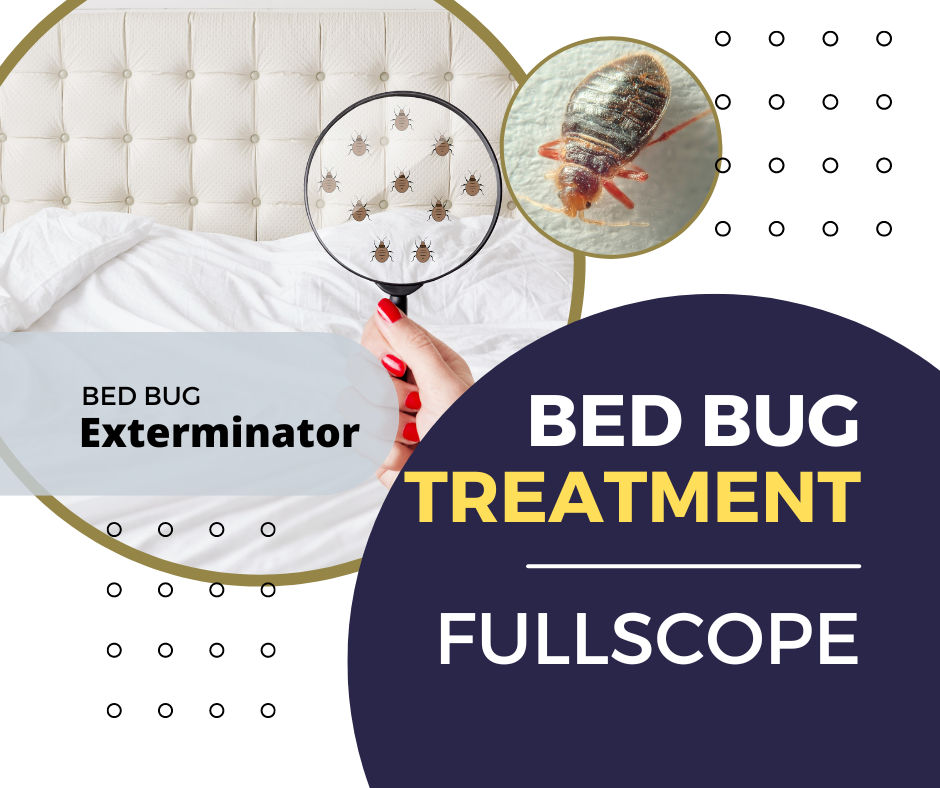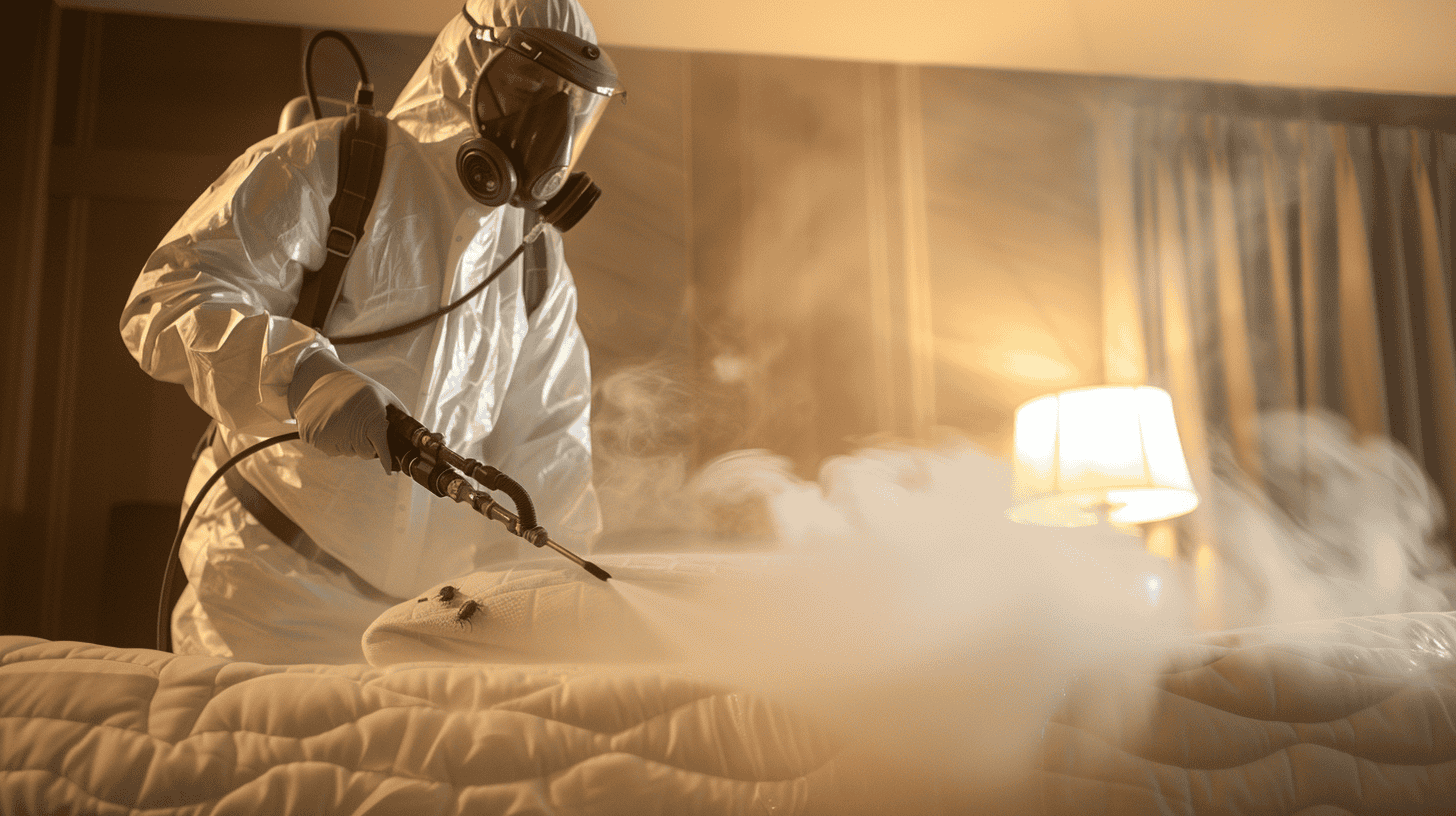How to Identify Bed Bug Bites and Prevent Future Infestations
How to Identify Bed Bug Bites and Prevent Future Infestations
Blog Article
Get Enlightened About the Kinds Of Parasite Control Approaches and Their Advantages for Homeowners
Understanding the various bug control methods offered to home owners is essential for reliable bug management. Homeowners who are educated can make critical selections that not only address pest problems but additionally improve the overall top quality of their living environment.
Chemical Insect Control Approaches
Chemical parasite control approaches are an essential element of integrated insect monitoring techniques for property owners seeking efficient options to pest invasions. These methods involve the application of chemical compounds developed to remove or hinder bugs that threaten personal residential or commercial property, health and wellness, and comfort. Common chemicals made use of consist of insecticides, herbicides, rodenticides, and fungicides, each tailored to target specific pests.
The key advantage of chemical insect control is its fast effectiveness; many solutions supply prompt results, reducing pest populaces considerably quickly. In addition, advancements in chemical formulations have caused items that are more eco pleasant and have reduced poisoning degrees for non-target organisms when applied correctly.

Organic Insect Control Methods
All-natural pest control methods have actually gained prominence as property owners look for much safer and extra lasting alternatives to traditional chemical techniques. Biological pest control strategies use all-natural predators, parasites, or microorganisms to manage bug populations effectively. This technique is not just eco-friendly however also decreases the threat of harm to non-target species, including beneficial bugs and wildlife.
Among the most typical organic control methods involves presenting all-natural killers right into the environment. For example, ladybugs can be utilized to regulate aphid populations, while nematodes target soil-dwelling insects like grubs. In addition, parasitoids-- microorganisms that reside on or within a host-- can be used to regulate certain insect types by laying eggs inside them, ultimately resulting in their death.
An additional approach is using biopesticides, which are originated from natural products such as plants, minerals, or microorganisms (bed bug exterminator). These products can successfully target pests while posing very little risk to people and pet dogs. Generally, organic pest control strategies provide house owners with an effective ways of pest administration that lines up with ecological concepts, advertising a healthier living setting while lowering reliance on artificial chemicals
Mechanical Insect Control Methods
Mechanical pest control approaches include a variety of methods that literally protect against or get rid of insects without the usage of chemicals. These methods are especially valuable for homeowners seeking eco-friendly alternatives while ensuring the safety of their living rooms.
One usual approach is using obstacles, such as displays, catches, and webs, which stop insects from entering homes or specific locations. Mounting window screens can effectively maintain pests out, while utilizing physical barriers around great site gardens can hinder bigger bugs like deer or bunnies. In addition, mechanical traps made for rodents can record and remove these parasites without the need for poisonous compounds.
One more efficient method entails making use of brooms and vacuum cleaners to remove parasites straight from surfaces. Regular cleaning and upkeep can dramatically decrease insect populaces by eliminating food sources and concealing spots. Using tools like ultrasonic bug repellents can discourage various pests through audio waves that are unpleasant to them however faint to human beings.
Social Parasite Control Practices
Social parasite control methods concentrate on modifying the setting and administration methods to create conditions that are much less conducive to pest invasions. These practices are basic in keeping a well balanced ecosystem and minimizing the dependence on chemical interventions. By altering agricultural practices, property owners can efficiently hinder pests while promoting plant health.
One common technique includes plant rotation, which disrupts the life process of pests by changing the kinds of plants grown in a certain area (bed bug exterminator). This not only minimizes pest populaces but additionally boosts soil health and wellness. Furthermore, intercropping-- growing diverse crops in closeness-- can puzzle bugs and lower their ability to find their favored host plants
Water management is an additional vital aspect of cultural practices. Proper watering methods can protect against standing water, which functions as a reproduction ground for mosquitoes and various other pests. Keeping cleanliness in and around the home, such as regularly eliminating debris and food waste, can significantly decrease insect attraction.
Integrating these social methods into a detailed insect monitoring approach permits property owners to create an atmosphere that naturally prevents parasites, thereby improving the effectiveness of other control techniques while advertising sustainable gardening and landscaping.

Integrated Bug Administration Approaches
Integrated Pest Monitoring (IPM) stands for an alternative method that read review integrates various approaches to successfully handle parasite populations while minimizing environmental effect. This methodology incorporates biological, cultural, physical, and chemical practices to accomplish lasting bug control. By analyzing pest populaces and their natural opponents, IPM emphasizes monitoring and identifying pests prior to applying control measures.
Among the core concepts of IPM is using thresholds, which establish the level of bug activity that calls for treatment. This makes sure that treatments are applied only when essential, minimizing the reliance on chemical pesticides. Organic control methods, such as introducing natural killers or parasites, job in combination with cultural methods like plant rotation and environment control to disrupt pest life cycles.
In addition, IPM encourages the usage of least-toxic chemical alternatives when treatment is necessary, focusing on products that position minimal danger to non-target microorganisms and the atmosphere. For house owners, taking on IPM comes close to not only improves the effectiveness of insect management but likewise advertises a much healthier living setting, promoting biodiversity and minimizing chemical exposure. Eventually, IPM encourages property owners to make informed choices that balance bug control with eco-friendly responsibility.
Conclusion
In final thought, understanding the various parasite control approaches encourages home owners to make educated decisions pertaining to pest administration. Each approach-- chemical, biological, mechanical, social, and incorporated bug management-- provides distinctive benefits that provide to various needs and preferences.
Recognizing the various insect control techniques readily available to home owners is vital for effective insect monitoring.Chemical pest control approaches are a crucial element of integrated bug monitoring techniques for house owners looking for efficient services to pest infestations. On the whole, organic pest control methods offer our website home owners with an efficient methods of pest management that aligns with ecological concepts, advertising a healthier living atmosphere while decreasing dependence on synthetic chemicals.
Cultural pest control methods concentrate on modifying the environment and administration techniques to create conditions that are less helpful to pest invasions.In verdict, understanding the numerous insect control approaches equips property owners to make enlightened choices relating to pest monitoring.
Report this page